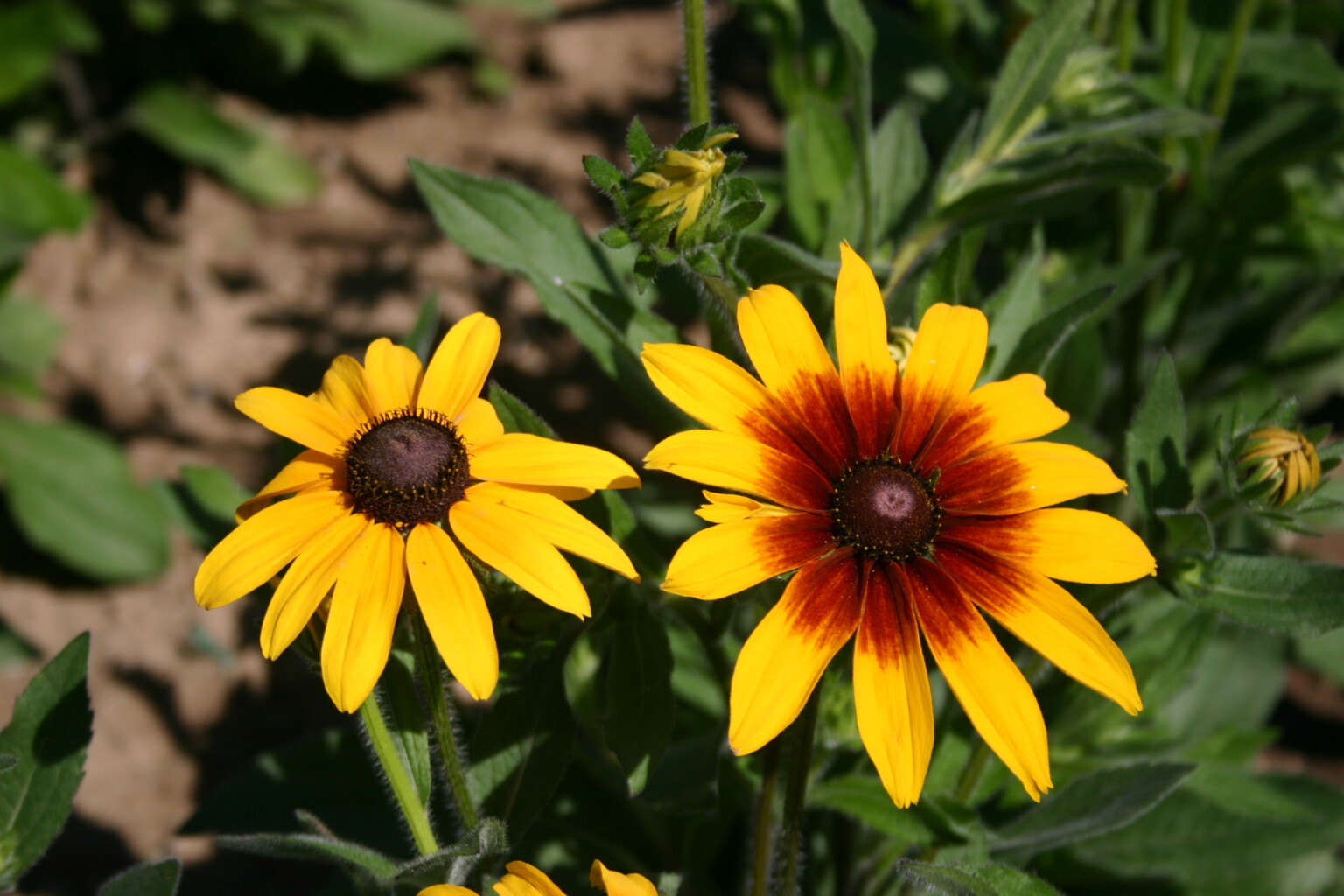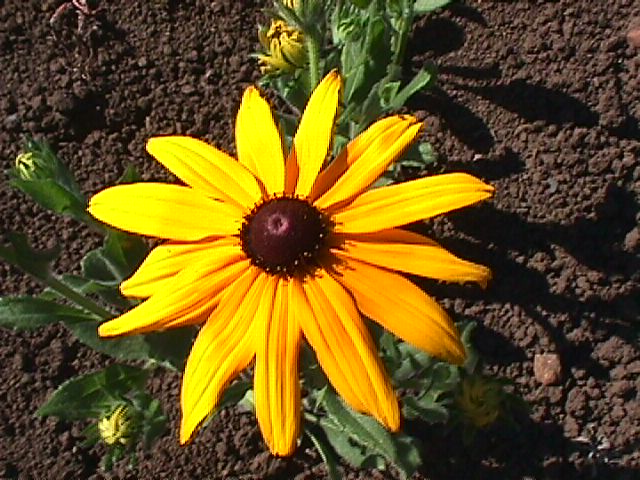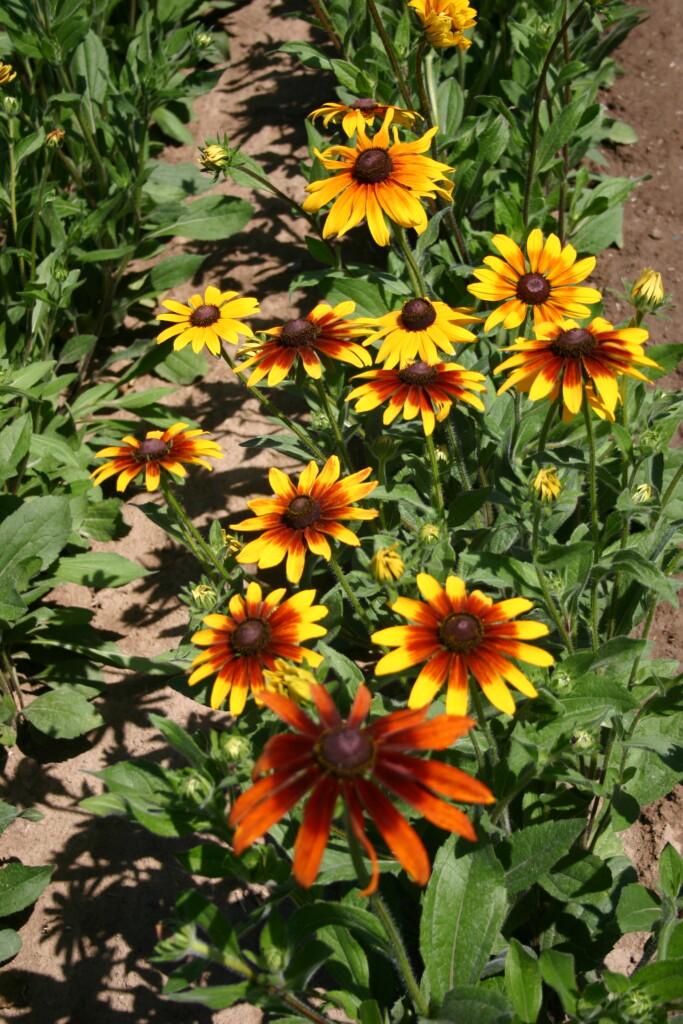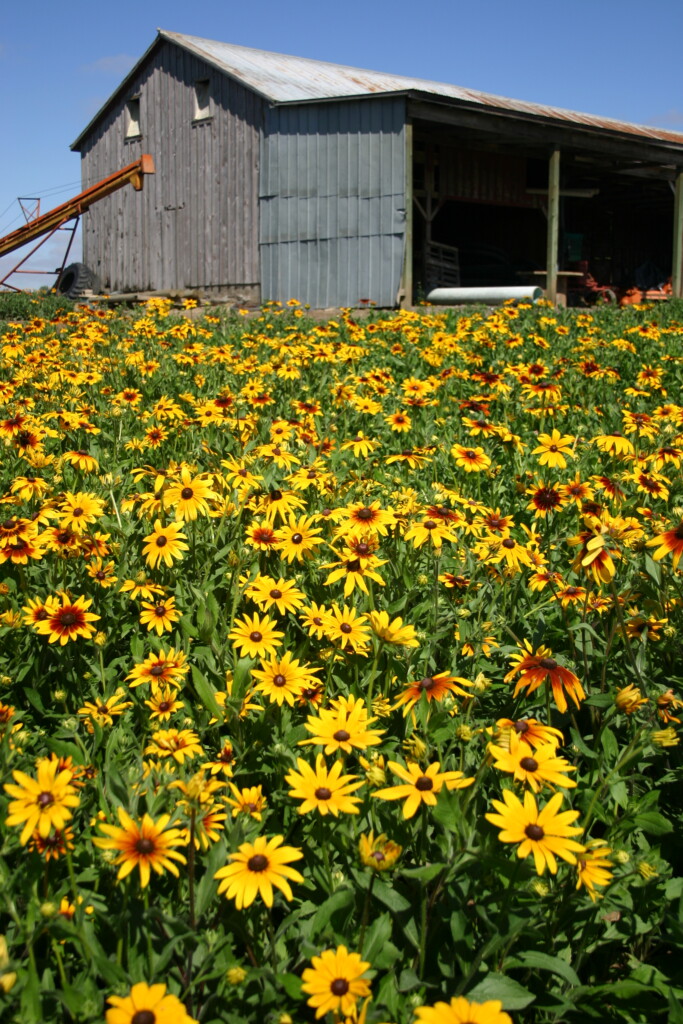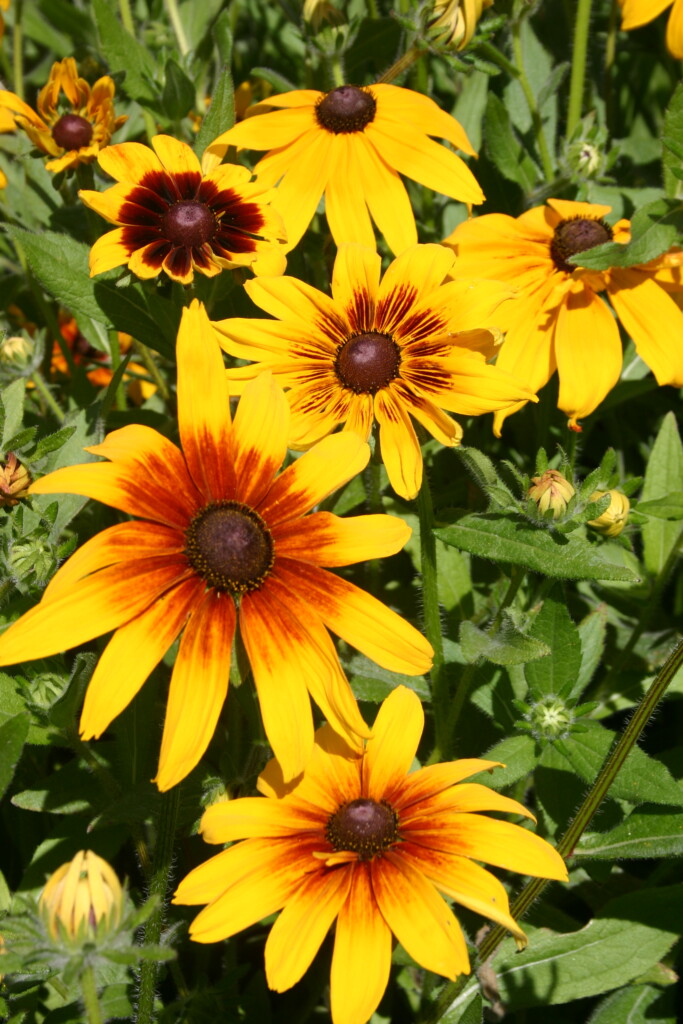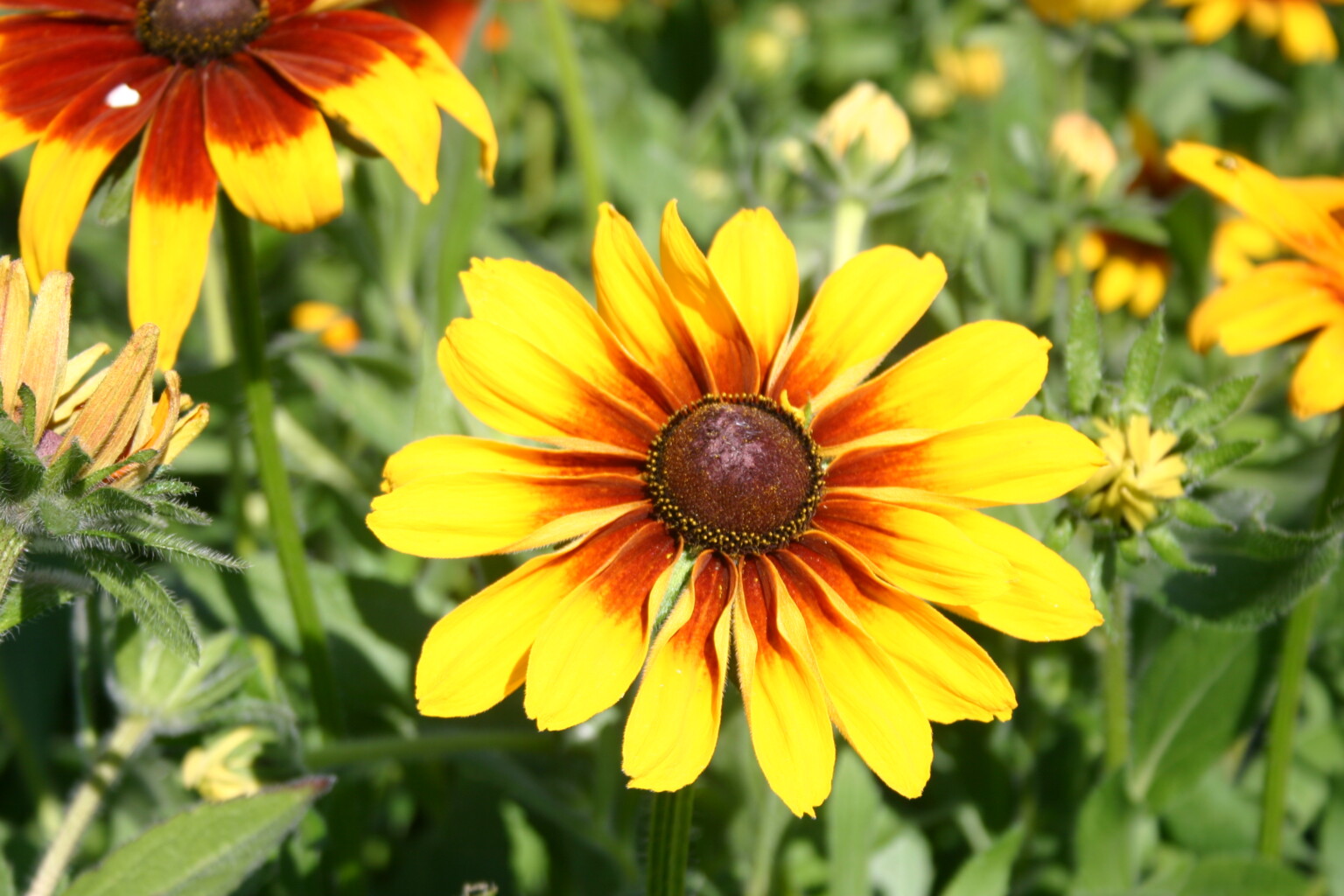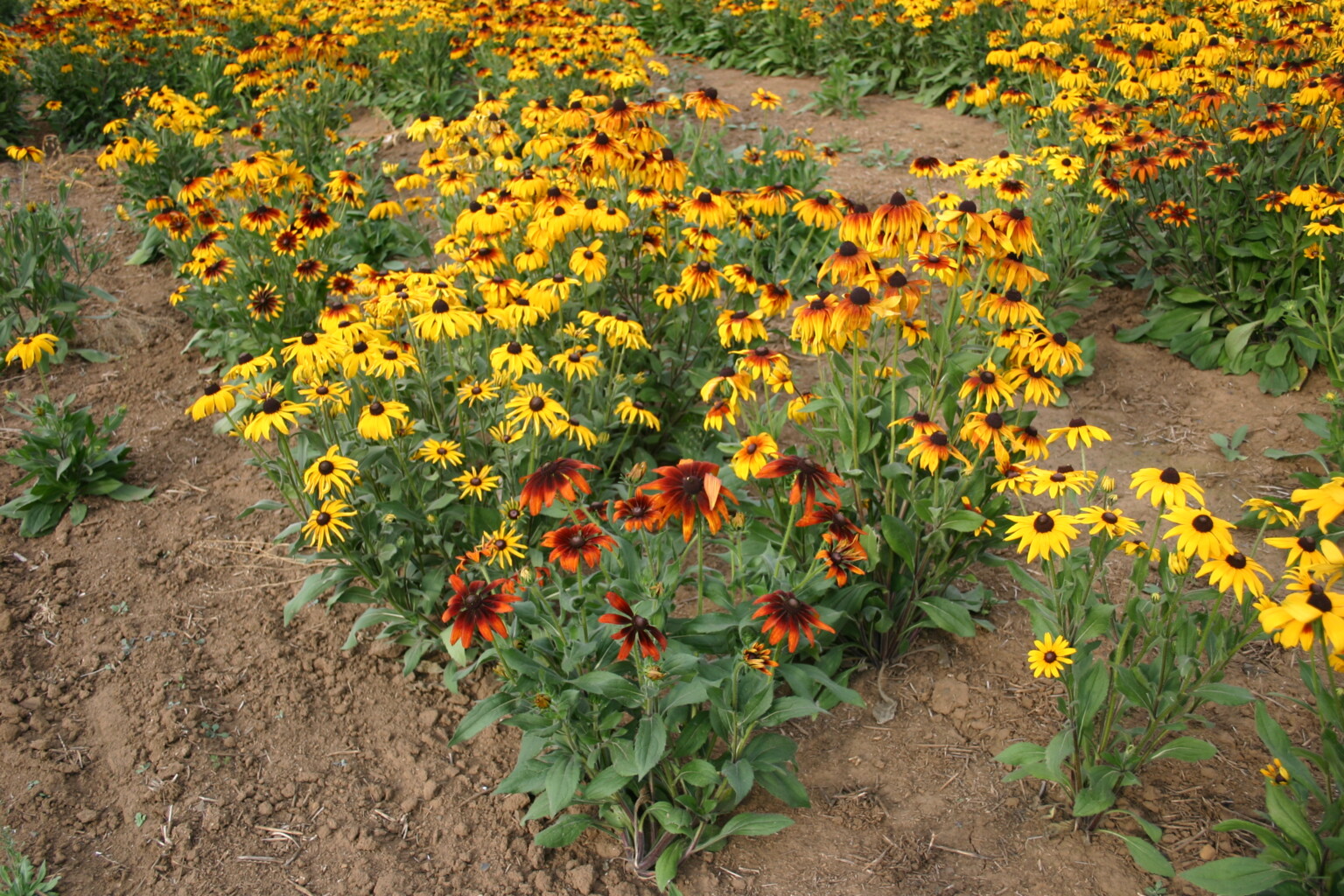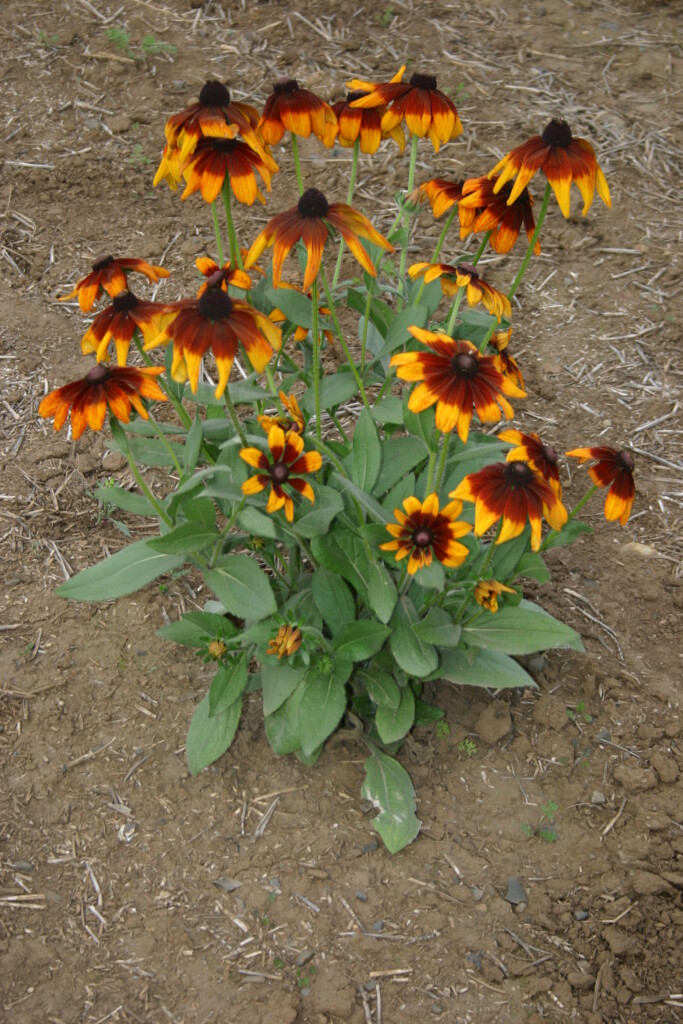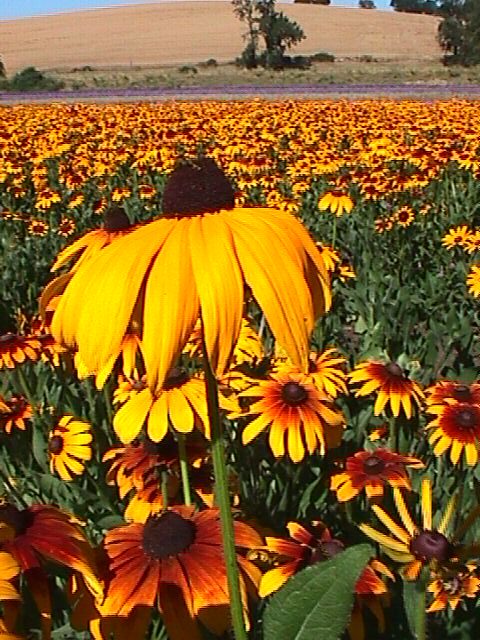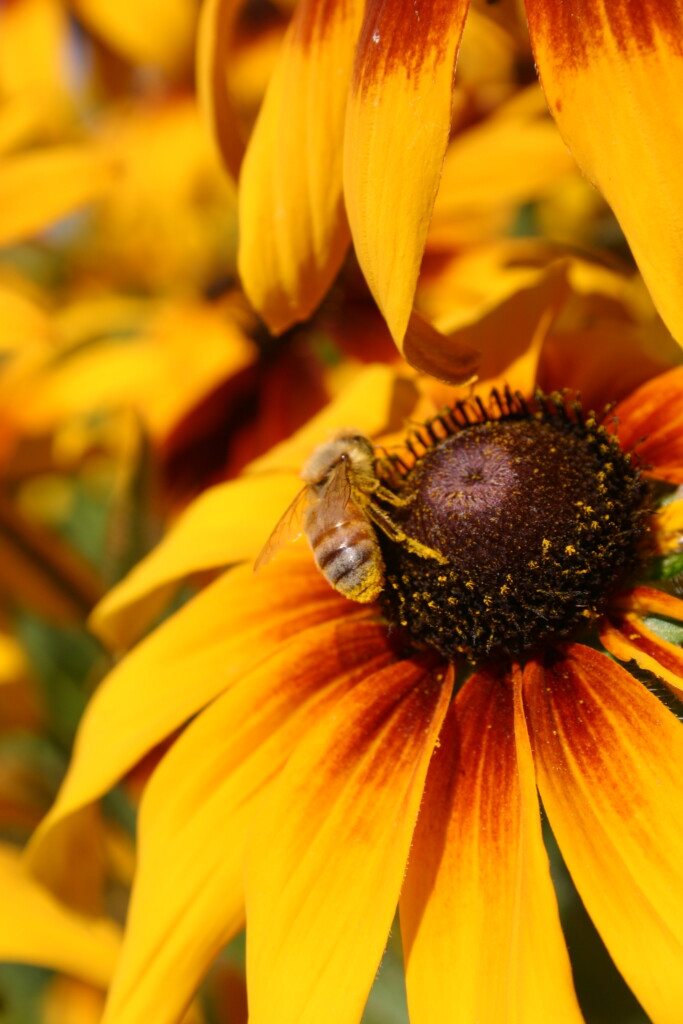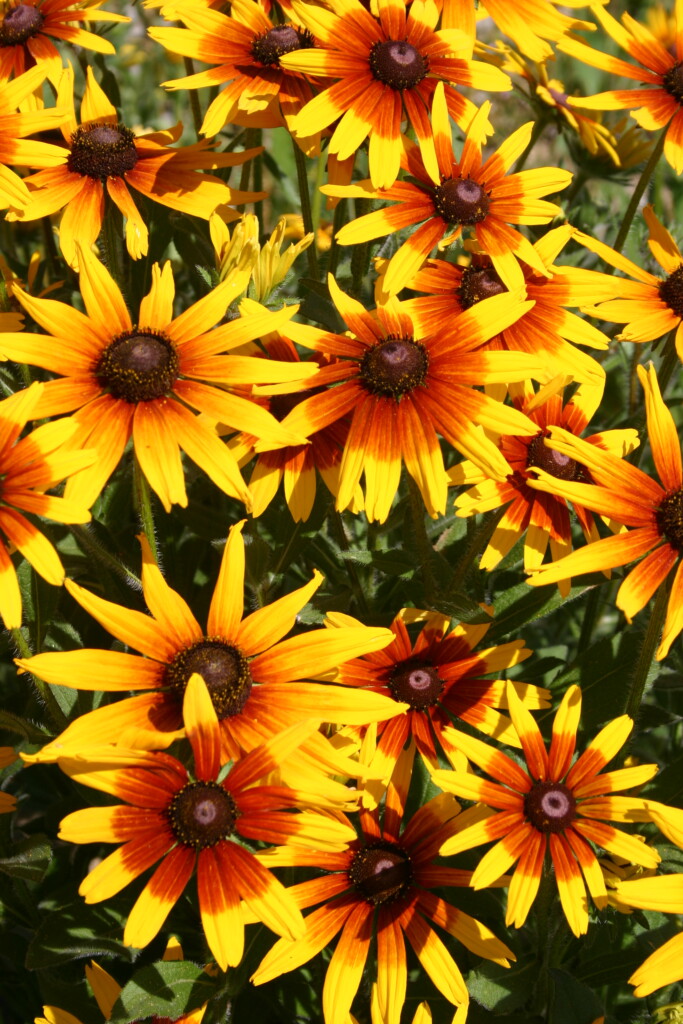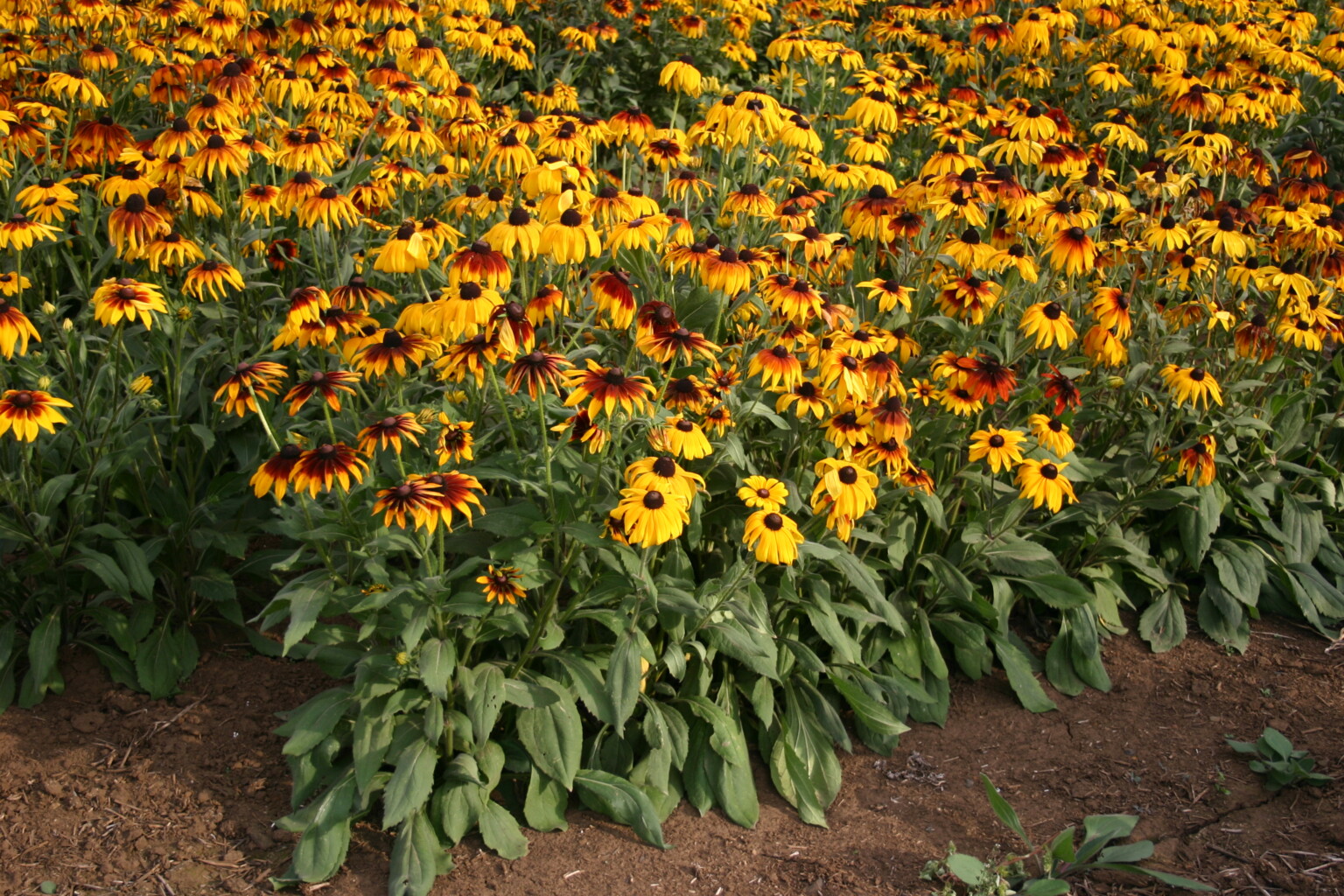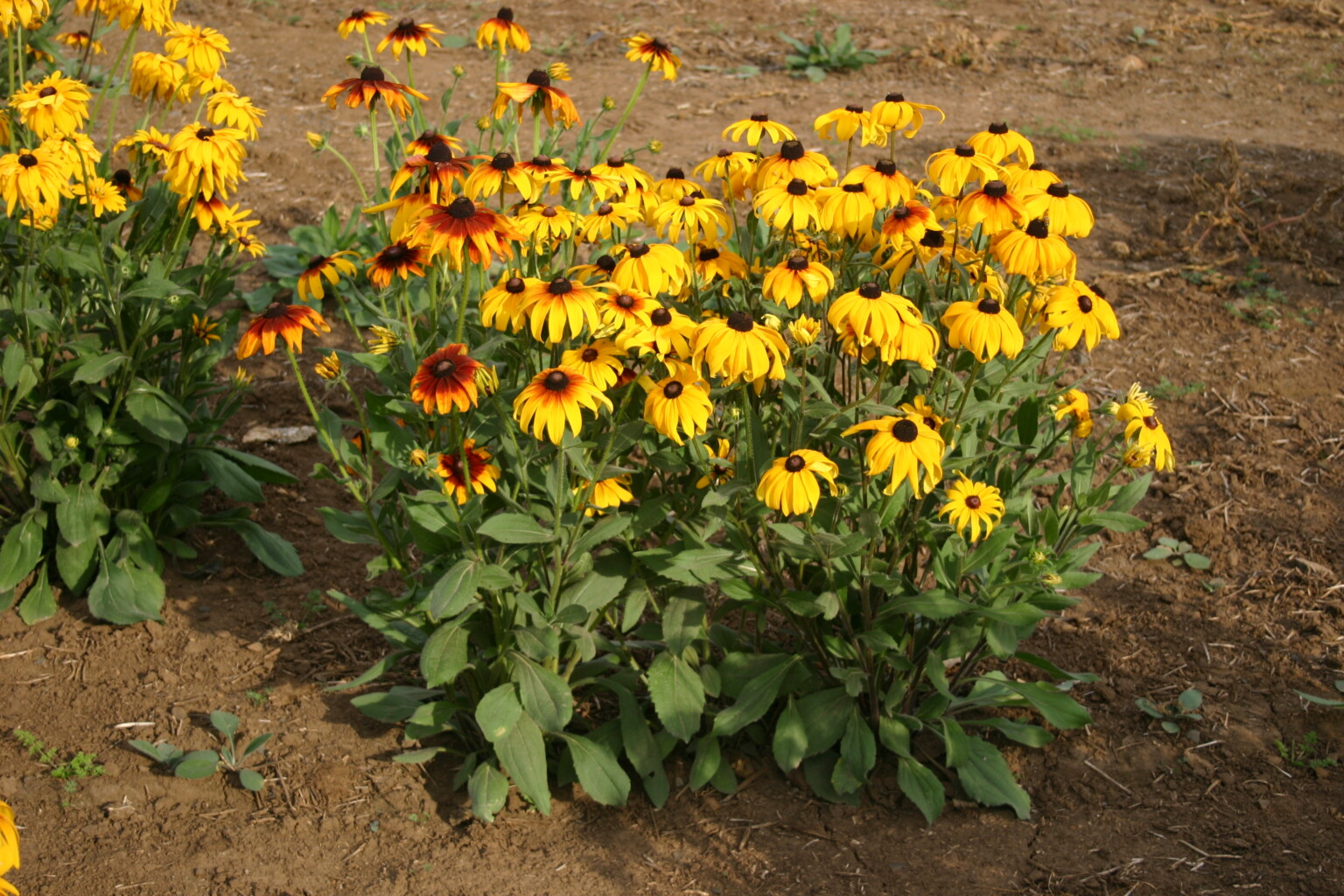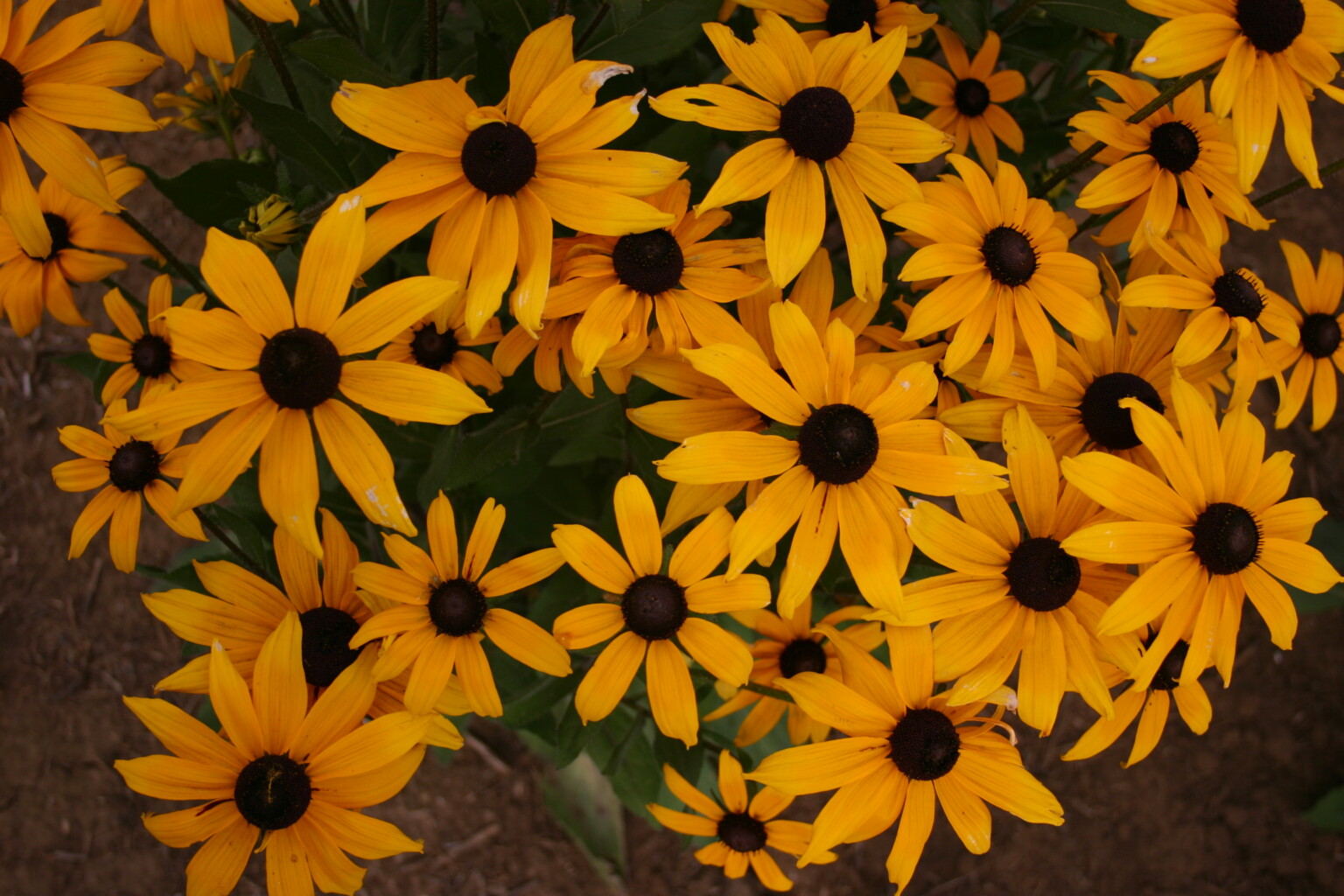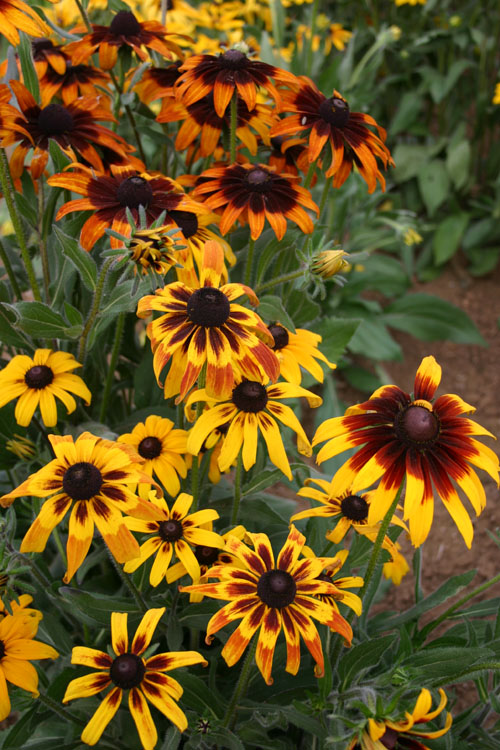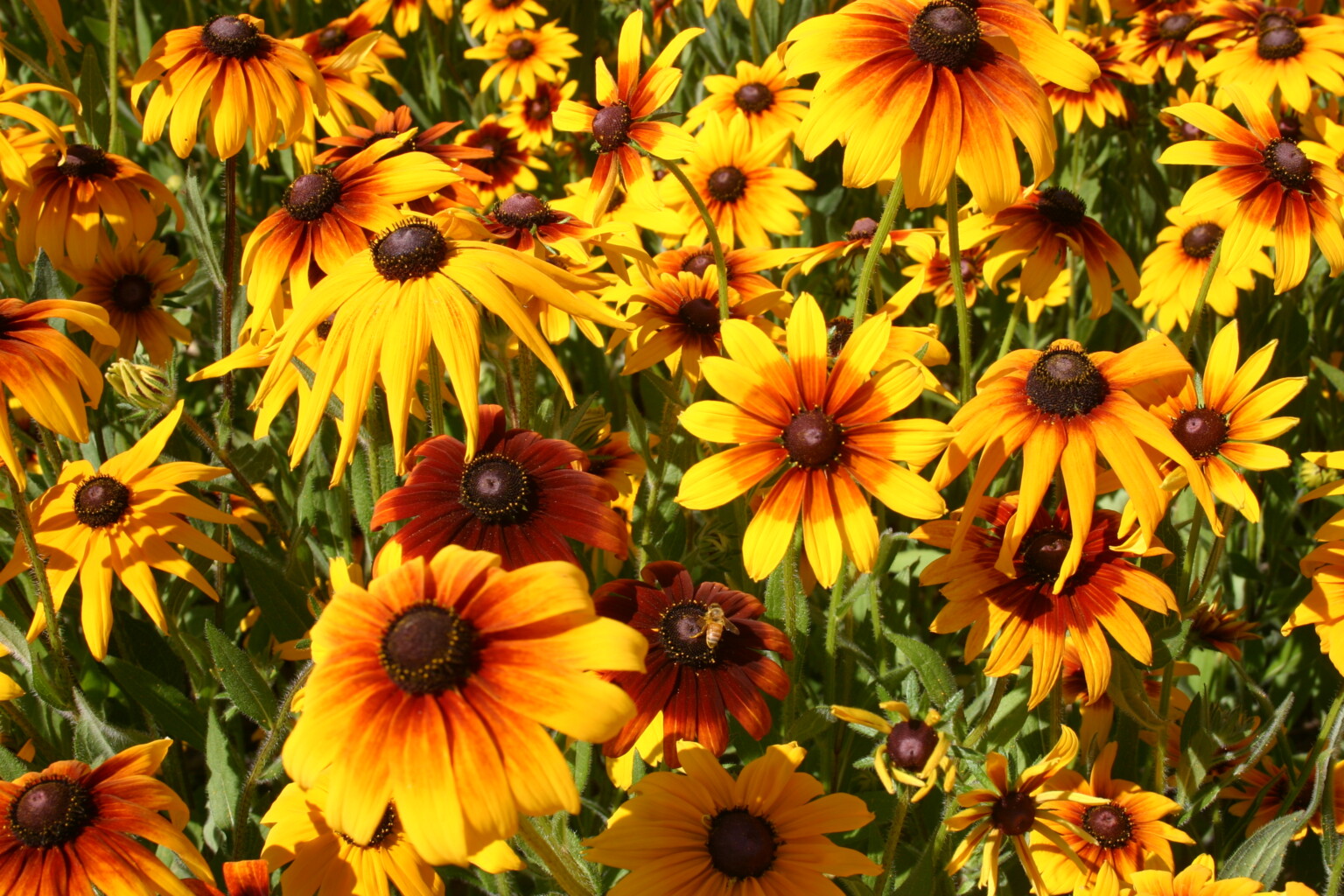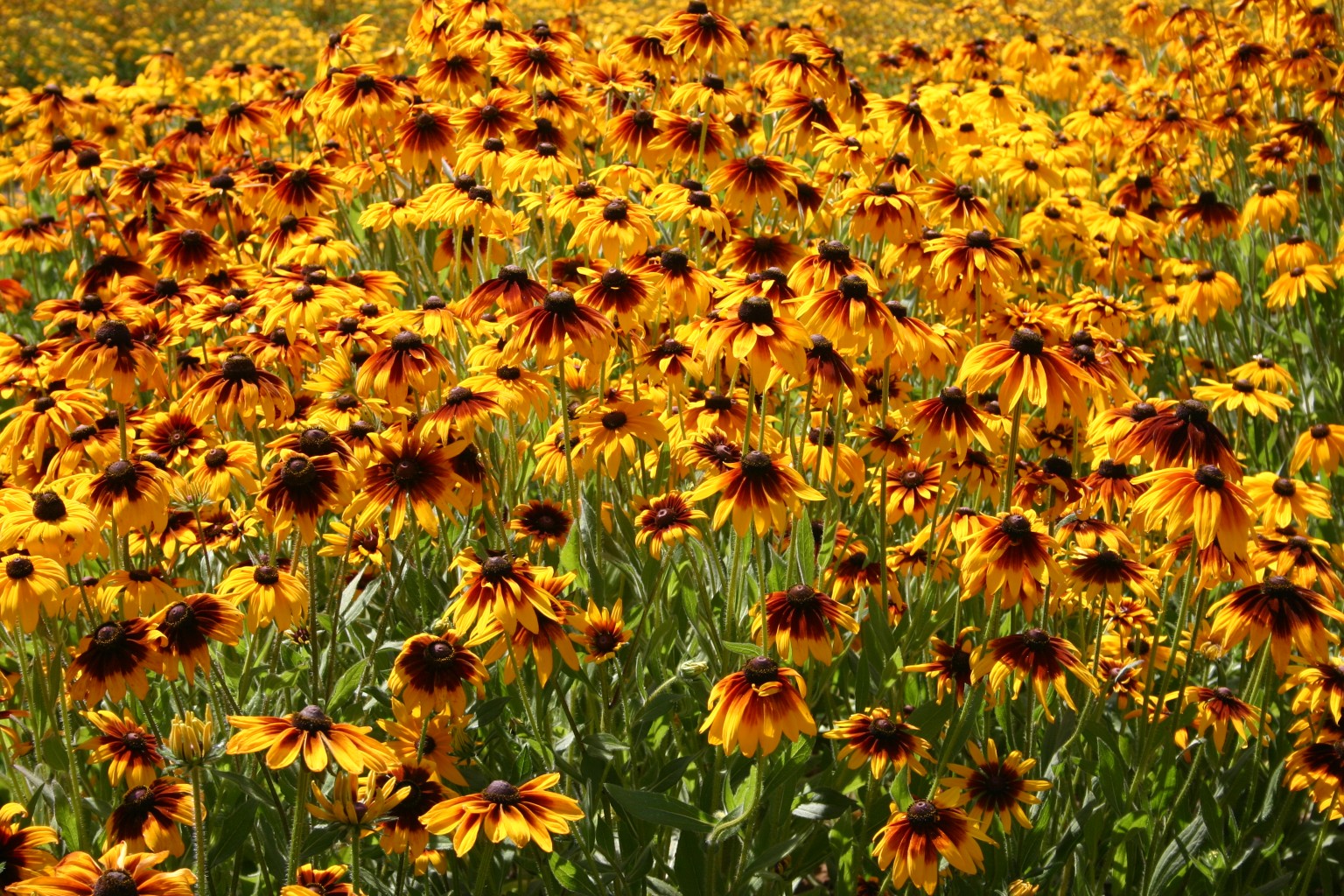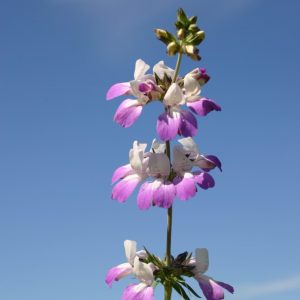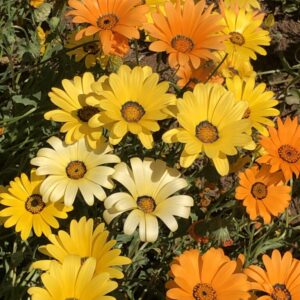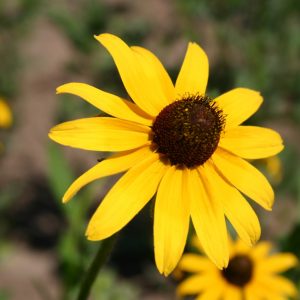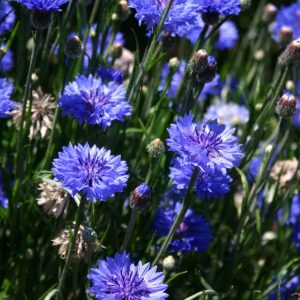Daisy – Gloriosa
$2.50 – $38.25Price range: $2.50 through $38.25
The Gloriosa Daisy is a striking and vibrant cultivar of Rudbeckia hirta, originally developed in the 1950s by the Burpee Seed Company. Using colchicine, a natural but toxic plant alkaloid, breeders induced polyploidy—a process that multiplies the plant’s chromosomes. This resulted in larger flowers with more intense coloration than the traditional Black-Eyed Susan from which it was derived.
Highly garden-friendly and easy to grow, the Gloriosa Daisy produces large, eye-catching blooms in shades of yellow, gold, orange, and russet, often with prominent dark centers. It makes an excellent cut flower and is also a magnet for pollinators, including bees, butterflies, and birds.
Gloriosa Daisies thrive in full sun and well-drained soil. They are heat-loving and drought-tolerant, requiring little water once established. In hot climates or ideal conditions, they may grow tall—up to 3 feet or more—and may need staking to prevent bending or lodging. Planting in partial shade may reduce bloom size and vigor.
In many regions, this daisy is treated as an annual or biennial, but it may behave as a short-lived perennial in favorable conditions. In USDA zones 7–10, it can be successfully fall-planted for earlier blooming the following season.
An added bonus for gardeners: Gloriosa Daisy is deer-resistant, making it a great low-maintenance choice for borders, wildflower meadows, and cottage gardens.
The broadcast rate for seeding is 4 – 5 pounds per acre.
The seed drill rate for seeding in rows is 2 pounds per acre.
| Purchasing Options | Price | Quantity | |
|---|---|---|---|
| Small Packet | $2.50 | ||
Covers approximately 5 square feet. |
|||
| 10 Gram | $3.00 | ||
Covers approximately: |
|||
| 1/4 Pound | $12.00 | ||
Covers approximately: |
|||
| 1 Pound | $38.25 | ||
Covers approximately: |
|||
| Scientific Name | Rudbeckia hirta "Gloriosa" |
|---|---|
| Product Type | Flower |
| Cycle | Annual, Perennial |
| Color | Orange, Red, Yellow |
| Height | 12-36" |
| Light Requirement | Full Sun, Part Sun/Shade |
| Germination Time | 7-30 days |
| Weeks to Bloom | 3 to 5 weeks |
| USDA Zone | 3 to 10 |
| Origin | Introduced species |
| Planting Season | Early Spring |
| Bloom Season | Summer, Fall |
| Seeds Per Pound | 1,451,000 |
| Seeding Rate (lb./acre) | 2 |
| Pollen/Nectar | Nectar, Pollen |
| Pollinator(s) | Bats, Birds, Butterflies, Honey Bees, Native Bees |
| Notes | Can be fall planted in zones 7-10, Deer-resistant, In certain growing climates this flower may act as a short-lived perennial |

